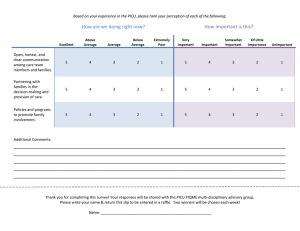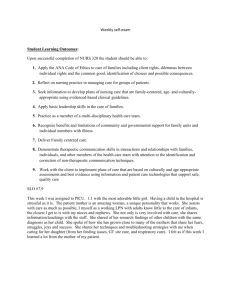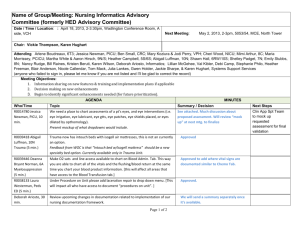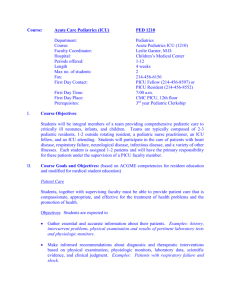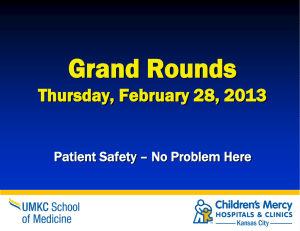PICU Safety Stand Down Sessions* Sunday, June 12 , 3:00-4:30 p.m.
advertisement
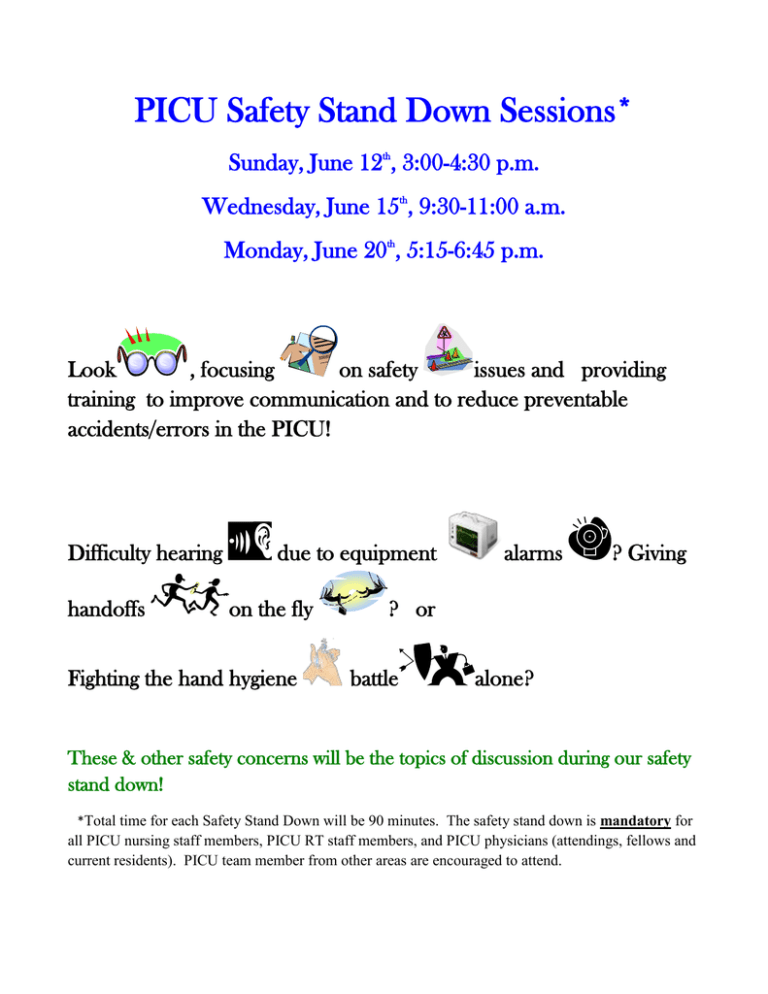
PICU Safety Stand Down Sessions* Sunday, June 12th, 3:00-4:30 p.m. Wednesday, June 15th, 9:30-11:00 a.m. Monday, June 20th, 5:15-6:45 p.m. Look , focusing on safety issues and providing training to improve communication and to reduce preventable accidents/errors in the PICU! Difficulty hearing handoffs due to equipment on the fly Fighting the hand hygiene alarms ? Giving ? or battle alone? These & other safety concerns will be the topics of discussion during our safety stand down! *Total time for each Safety Stand Down will be 90 minutes. The safety stand down is mandatory for all PICU nursing staff members, PICU RT staff members, and PICU physicians (attendings, fellows and current residents). PICU team member from other areas are encouraged to attend. PICU Safety Stand Down Facilitator Agenda Overall Purpose and Introduction – 30 minutes Review how others see the PICU, tell stories about how we have heard from internal and external sources. We are the ones that get it right. We should be proud of that fact since we all have joint responsibility for the performance of our unit. It is extremely hard to keep our gains – especially when we are working on many things at once and often feel overwhelmed. It is the most important aspect of our jobs to make sure the patients are safe and receive the highest quality care. The only way to make sure our system is the right one for the patients is to have that shared vision. We have seen subtle and not so subtle areas of safety concerns. We are here today to talk openly and honestly about how we can refocus on these topics and provide the needed support to make this focus successful. What we work on today will not fix everything but at least bring this to the forefront and give us a platform to work from Illustrative Stories and Examples Likely topics for stories include: Alarm fatigue and complacency with general room safety Complacency with teamwork tools Frustrations with asking others to comply with isolation signs Hand off errors Interactive Discussion (everyone) Ask for stories from the audience. Ask the audience about barriers and things that prevent us from keeping our gains. Let them know that we are taking notes and will try to work as a team to eliminate barriers. Safety again is top priority so we will continue to work on this after the safety stand downs. Divide into 3 teams for rotation through stations Station 1: Alarm Fatigue/General Room Safety (20 minutes) Review of General Room Safety --- What to consider? Why it is important? Who is responsible? Why we have alarms? Why they fail? What is alarm fatigue? History of alarm fatigue in the literature? What causes alarms fatigue? Joint Commission national patient safety goals. Reports in the literature and outcomes….Examples from our unit. Lead group participation/input on what makes us ignore our alarms in the PICU? Followed by ideas on how we combat alarm fatigue and become more sensitive/responsive to alarms? Station 2: Patient advocacy and infection prevention/difficult situations during advocacy (20 minutes) Review Hand Hygiene Compliance and Observation Tool Present and Discuss JCAHO Disruptive Behavior Interactive discussion – include personal perspective related to asking others to be compliant with infection prevention and stories. Consider role play exercises, if time permits. Station 3: Communication/Hand Offs/Checking (20 minutes) Review importance of accurate handoff-correct information and active check of all equipment attached to patient. Present and discuss the handoff tools for RN, RT and MD. PICU Safety Stand Down Feedback Survey 1. To what extent did the safety stand down raise your awareness of safety issues in the PICU? Not at all (1) Very little (2) Somewhat (3) A great deal (4) 2. How helpful/ meaningful/ useful were the discussions? Not at all (1) Very little (2) Somewhat (3) Very helpful/ meaningful/ useful (4) 3. What did you like best about the safety stand down? 4. What are your suggestions for improvements? 5. List additional ideas for improving safety in the PICU.
